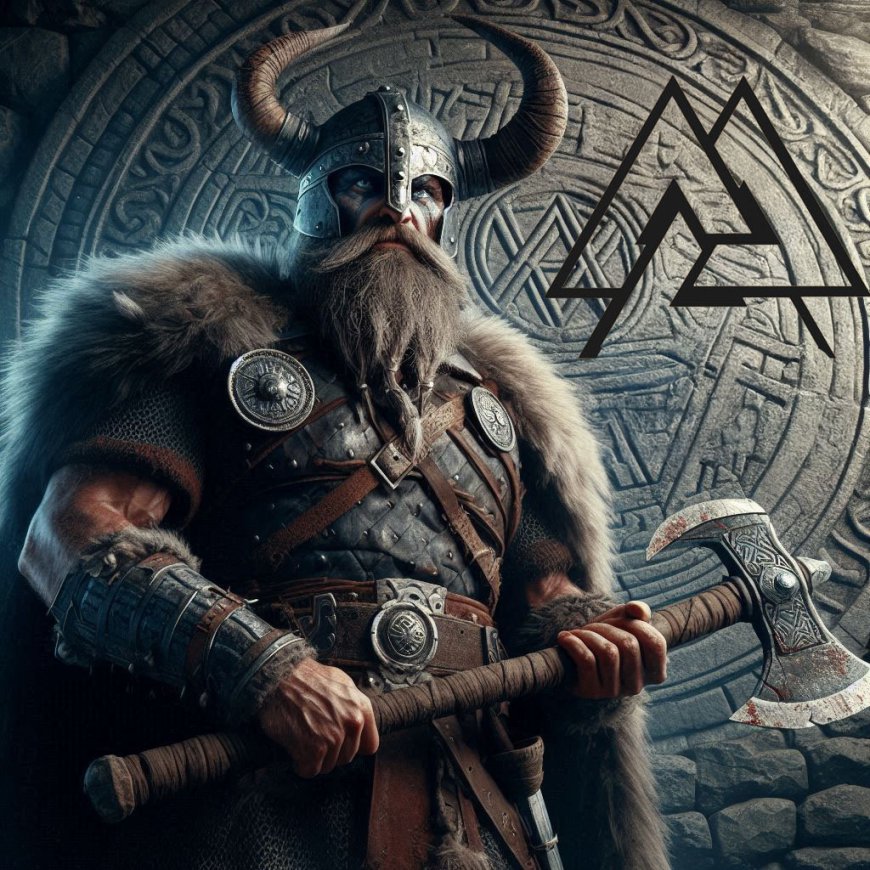Norse Valknut: The Popular Symbol in Viking Mythology
The Valknut, a powerful symbol associated with Norse mythology, has fascinated historians and enthusiasts alike for centuries. Comprising three interlocking triangles, the Valknut is often linked to the god Odin and themes of death, battle, and the afterlife.

The Valknut, a powerful symbol associated with Norse mythology, has fascinated historians and enthusiasts alike for centuries. Comprising three interlocking triangles, the Valknut is often linked to the god Odin and themes of death, battle, and the afterlife. This ancient rune, which appears on various archaeological artifacts, is steeped in mystery and has left a lasting legacy in Viking culture and symbolism.
The Meaning Behind the Valknut
In Old Norse, "valr" means "slain warriors," and "knut" translates to "knot." Together, the name Valknut signifies the "knot of the slain." It is widely regarded as a symbol of the transition between life and death, a motif frequently associated with the god Odin, the Allfather of the Norse pantheon. Odin, a god of wisdom, war, and the dead, is often depicted as a guide for souls transitioning from the mortal world to Valhalla, the hall of the slain.
The Valknut has also been connected to other Norse concepts like fate and the cycle of life and death. This connection has led many to interpret it as a symbol of courage, fearlessness in the face of death, and the honor that comes from dying in battle—a fundamental belief in Viking culture.
The Valknut in Archaeology and Norse Artifacts
The Valknut has been found on several ancient artifacts across Scandinavia, especially on items dating back to the Viking Age (8th to 11th century). Some of the most notable examples include carved stones, such as the Stora Hammars and Tängelgårda stones in Sweden, which depict scenes of warriors and sacrifice, often accompanied by the Valknut. These stones are believed to have served as memorials or markers that connected the dead to Odin and Valhalla.
In addition to memorial stones, the Valknut has appeared on items like rings, weapons, and even ship carvings. Its placement on these objects suggests a purpose beyond mere decoration; it may have been intended to invoke Odin’s protection or to symbolize the warrior's readiness to face death with honor.
The Symbolism of the Three Interlocking Triangles
The three interlocking triangles of the Valknut carry profound symbolic weight. While interpretations vary, the interconnectedness is often seen as a representation of the past, present, and future—a common theme in Norse belief systems, where fate (known as "Wyrd" or "Urðr") plays a central role. The Valknut’s geometry may also represent the nine worlds connected by Yggdrasil, the World Tree, uniting the realms of gods, humans, and the dead.
Some scholars believe that the triangles’ interlocked form could signify the cycle of life, death, and rebirth, aligning with Odin’s role as a god who presides over wisdom and sacrifice. To the Vikings, the Valknut likely represented a reminder of life’s fragility and the honor that lies in accepting one’s fate.
Modern Interpretations of the Valknut
Today, the Valknut has taken on new meanings while still resonating with its ancient roots. In modern Norse and Viking-inspired jewelry, the Valknut often appears as a symbol of protection and personal strength. People who wear it may do so as a way to honor Viking heritage, to invoke the bravery of Norse warriors, or to find courage in the face of personal challenges.
However, the Valknut is more than just a fashion statement. For many, it serves as a reminder of the values that defined the Vikings: loyalty, courage, and a profound connection to the divine. This modern appreciation for the Valknut has helped to keep its symbolism alive, making it one of the most popular Norse symbols in contemporary culture.
The Valknut in Tattoos and Art
The Valknut has gained popularity in tattoo art as well, often symbolizing fearlessness and acceptance of one’s own fate. Many individuals who choose to incorporate the Valknut into their tattoos do so to pay homage to their Norse ancestry or to embrace the values of strength and resilience. Its geometric simplicity and deep meaning make it a compelling choice for those looking to carry Viking heritage into the modern era.
Whether carved into stone, etched into metal, or inked onto skin, the Valknut remains a powerful emblem of the enduring legacy of Norse mythology.
Embracing the Valknut Today
As interest in Norse mythology and Viking culture continues to grow, the Valknut remains a powerful and meaningful symbol for those drawn to its mystique. Wearing or displaying the Valknut is a way to connect with the spirit of the Vikings, a reminder to live life with courage and to face adversity with honor.
Conclusion: The Enduring Legacy of the Valknut
The Valknut is more than just a relic of Viking history. Its geometric form, spiritual depth, and association with Norse mythology make it a timeless symbol of courage and honor. In a modern world where values can often seem transient, the Valknut stands as a reminder of a time when bravery and fate were the guiding forces of life. Whether worn as jewelry, inked as a tattoo, or displayed as an art piece, the Valknut continues to inspire and connect us to the resilient spirit of the Vikings.

 apotis
apotis